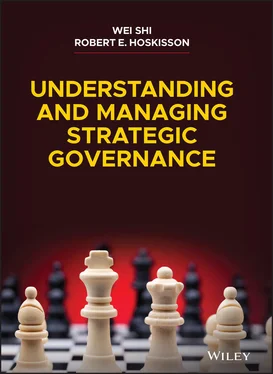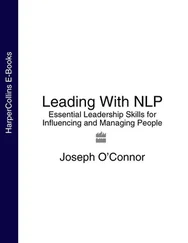The nominating and governance committees—sometimes held as a single, combined committee—carry out important functions. The governance committee can conduct a management audit, assessing the capabilities and potential of the company's board and management team, and suggest training to sensitize the directors to environmental, regulatory, or diversity issues that affect strategy. Such an audit focuses board attention on human assets and helps plan changes in leadership. In fact, succession planning forms another crucial issue under the purview of the governance committee. When a CEO is dismissed or moves to another firm, a board of directors without a strong succession plan may scramble for a replacement, which may lead to serious strategic consequences. Many boards have authorized their nominating committees to seek out potential executive talent to avoid shocks upon surprise departures. Some boards hold an annual joint session of the compensation committee, the nominating and governance committees, and the executive committee to discuss succession planning and executive resource development. Another important issue lies in appointing qualified board committee chairs. When highly qualified chairs are passed over and less qualified members receive chair appointments, the selections can lead to a negative board climate, 46 which also may affect strategic governance. To avoid pitfalls from inadequate chair appointments or succession shocks, directors should formalize succession processes that can improve their information collecting and processing abilities and give rise to a greater quantity and quality of qualified chairs and CEO candidates. 47 The following example demonstrates the hazard in not having a succession plan in place.
In mid-2020, leaders of Cerberus Capital Management, a private equity firm holding more than 5 percent ownership of Commerzbank, the second largest German bank, sent a letter to the board chair that the bank “has not presented a coherent strategy and has failed to implement even its own progressively less-ambitious plans.” Cerberus heads wanted to name two new supervisory board members to encourage significant changes to Commerzbank's supervisory board, management board, and the strategic plan. One month later, over disagreements with Cerberus (the bank's second largest shareholder), Commerzbank CEO Martin Zielke announced unexpectedly that he would step down from his position. The abrupt announcement came as a surprise and reduced the value of the firm, while the departure left a governance void at the bank. 48 Compared to German competitor Deutsche Bank's 1 percent loss, Coomerzbank shares fell 26 percent, when a new CEO was appointed in September 2020. 49
Although board committees supervise managerial incentives and behavior, the relationship between committee chairs and top managers does not have to be adversarial. In fact, the compensation committee sets appropriate incentives so that the top managers, especially the CEO, will work on behalf of shareholders and stakeholders to create a strategy and make strategic decisions that will build both firm growth and stakeholder wealth. Pay structure for the top management team by the compensation committee creates a definite strategic governance issue. 50 A large pay differential among top management team members can give rise to problematic social comparison, since a smaller number of officers may get large pay packages, whereas others receive less. 51 Large pay dispersions can generate less cooperative teamwork and less effective overall strategy implementation, ultimately leading to lower firm performance. For instance, a large pay gap between CEOs and non-CEO top executives provides strong incentives for the latter to resort to misconduct as a means of outperforming others. 52 Relatedly, high pay dispersion among employees in R&D groups leads to less innovation, 53 which is especially detrimental to firms in the pharmaceutical industry or other industries that depend on innovation for continued profitability. Collective incentives focused on the top management team can also influence how much the whole firm will focus on corporate social responsibility issues. 54 Also, by setting the pay culture for the firm, not only for top managers but for employees overall, the compensation committee influences strategic implementation throughout the organization.
Audit committees may likewise influence strategy, albeit at times indirectly. As noted earlier, boards with a majority of outside directors depend on financial outcomes to judge firm performance, or what is labeled financial control . 55 Comparatively, a strategic control emphasis allows for the evaluation of strategic situations subjectively, based on the quality of board member strategic comprehension during decision-making. If no one on the audit committee can help inform outside board members to understand the strategic contingencies involved, their sole dependence on their accounting and financial orientation will likely affect the firm's strategy, since managers will take actions that involve less risk, such as more unrelated diversification. 56 That is, if managers feel that they are judged on financial outcomes alone rather than on the upfront agreement of the board (or committee) on the quality of their decisions using strategic controls, they are likely to seek to diversify the firm to reduce their employment risk (see Chapter 3). 57
Business-level strategy (strategic positioning within the same industry) is also affected by these control systems. In a classic strategy book titled Organizational Strategy, Structure, and Process , 58 two polar business-level strategies are defined: defenders and prospectors. Defender strategies target stable and defensible market domains, seeking to solve the engineering problem by focusing efforts on producing and distributing goods and services in the most efficient and cost-effective manner possible. Alternatively, prospectors pursue strategies that tend to compete by continually finding and exploiting new product and market opportunities, seeking to establish strong product reputation and market dominance through product innovation and market development. Prospectors take risks, which enable them to quickly respond to new opportunities and changing competitive landscapes. When a firm pursues a less aggressive, more predictable, and stable strategy (such as those generally pursued by defenders), the audit committee can rely more on financial control, judging executives based on their achievement of financial objectives 59 and an appropriate tax strategy. 60 However, a prospector firm audit committee may need to allow executives to take on more risk. Directors should therefore make sure that the audit committee is structured with the right members to fit the business-level strategic approach that the firm pursues to enable proper strategy execution (see Chapter 4).
The most beneficial background for audit committee members and the optimal committee practices may differ between industries and even with the board as a whole; firms in high-technology industries with rapid change will need to have more emphasis on strategic control than more stable industries. 61 In addition to industry, the stage of the firm in its lifecycle or its strategic focus may also affect optimum governance characteristics and processes. 62 A small, young, rapidly growing firm with high institutional ownership, for example, may benefit more from directors with industry expertise and from a greater focus on serving, as in an advisory source to management. Conversely, a large, established firm in a declining industry, with a widely dispersed shareholder base, may benefit more from directors with financial expertise and a board more focused on its monitoring role.
EMPLOYEES AS INTERNAL GOVERNANCE ACTORS
Employees constitute an important group of internal stakeholders for firms. Employees not only provide human capital critical to sustain a firm's daily operations, but also play an essential role in maintaining and expanding customer bases. The impact of employees on corporate governance varies significantly across the world. In the United States, the key channel for employees to participate in governance occurs through employee stock ownership plans (ESOPs). 63 ESOPs are investment vehicles through which employers make tax-deductible contributions of cash or stock into a trust, whose assets are allocated in a predetermined manner to employee plan participants. 64 By 2016, around 6,624 ESOPs and ESOP-like plans were active in the US, holding total assets of nearly $1.4 trillion, according to the National Center for Employee Ownership. 65
Читать дальше












